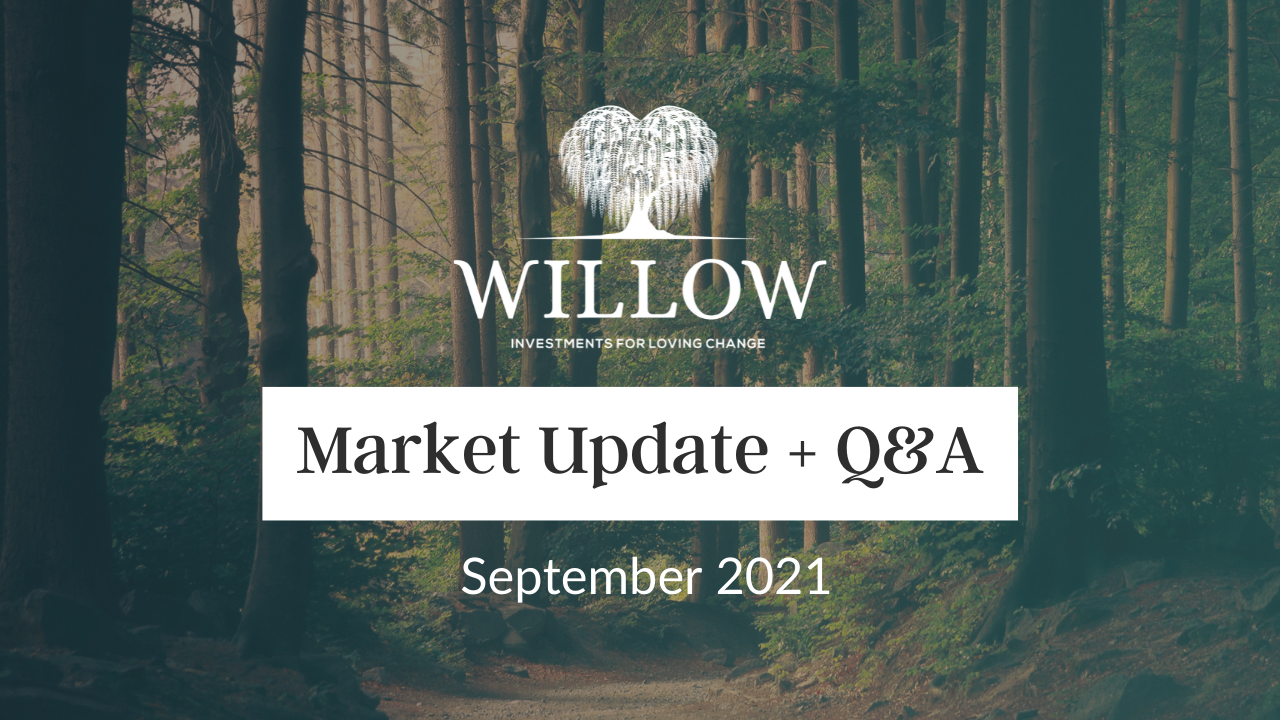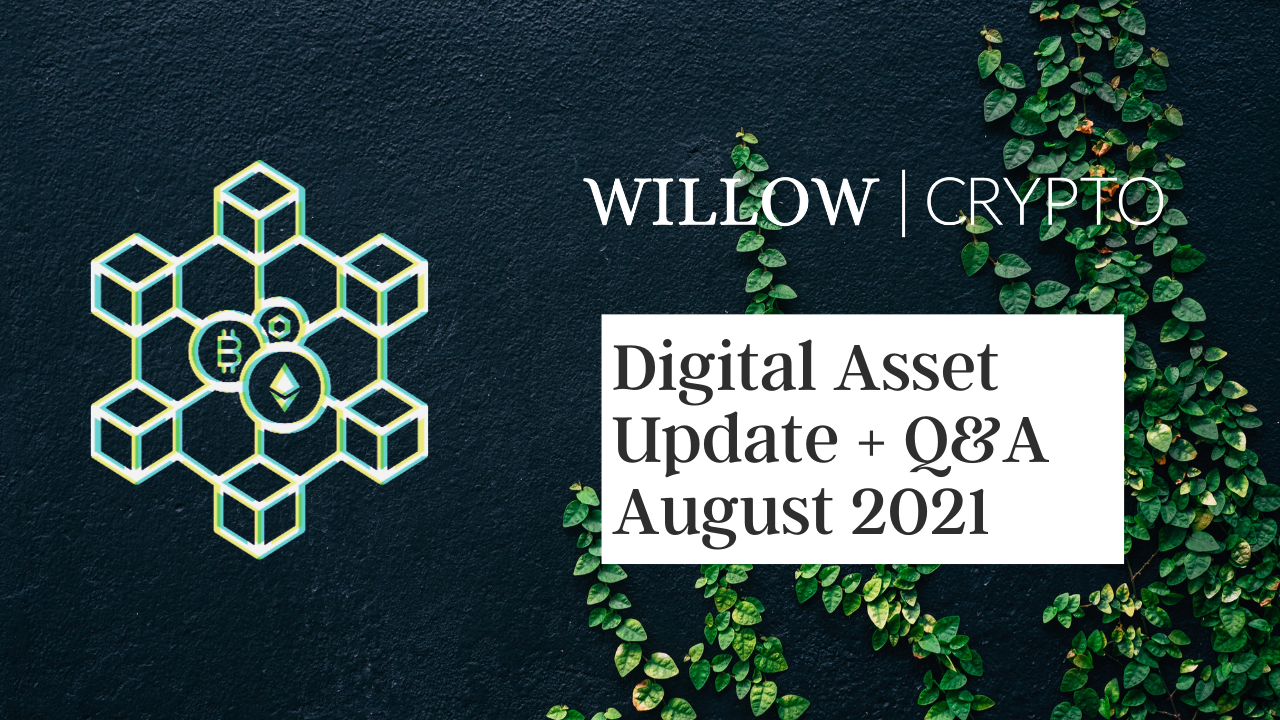Market Update + Q&A for September 2021
See below for our September Market Update + Q&A. Summary points below the video.
Market Update & Q&A Video Summary (September 2021):
- Our volatility risk indicator, which is a measure of the implied move in markets over the next 30 days, is trending generally in the right direction, meaning that overall, it’s saying there is less risk within next 30 days. There have been spikes happening lately, especially in the short term, which is something we’re keeping an eye on.
- The CDS spreads, which essentially show the price of insurance on a company going bankrupt, continue to be benign. Bond spreads are showing a slight elevation and marginally higher yields. Typically, you’re going to see this type of movement happen in advance of any other movements on the risk spectrum. It could be saying that there is some risk down the road, but, because this is high yield is moving the most after being so low for so long, this is not yet too alarming.
- Our Willow Manufacturing Health Index has come down over the past month or two but it is still generally healthy. Most likely a lot of the supply chain issues are starting to show up, and this is where we’ll start to see some of that. We are going to continue paying attention to this as continued deterioration here could spell trouble ahead. There is the misconception that there is a labor shortage but really, it’s a wage shortage – companies aren’t paying people more to work because their future outlooks are muted and don’t justify increased wages, even if it means slower service.
- Consumer health might be starting to fall off due to government payouts slowing, or the slight shift in the velocity of growth in the housing market. It doesn’t signal to us to get out of markets entirely, but we want to pay really close attention to the data here.
What keeps us up a night?
- Power consolidating to the top: We’re seeing more and more consolidation of power at larger conglomerates, like Amazon for example while at the same time, government is also grasping for more power. This is concerning to us because historically wealth concentration and the formation of oligopolistic industry has always led to civil unrest.
- Supply chain disruption: For decades we’ve used a system called JIT or just in time manufacturing which allowed companies to keep really low inventory, knowing that they could get things from overseas relatively quickly. This system works great as long as there isn’t some exogenous shock or some big disruption or geopolitical issue, such as COVID, shut downs, and global political contention. We’re now seeing a lot of supply disruption because a many of the components that we need for our manufacturing sector are sourced from overseas. Supply disruption also leads to an inflationary environment. This is why when we do our ESG work, supply chains are something that we really try to take a look at and examine because our goal is to find those companies that are building resiliencies into their supply chain, so when these kinds of disruptions happen, they’re not as impacted.
- Inflation/stagflation: Prices are going up on everything from food, taxes, and rent to insurance premiums and education. These things that are happening are going to chew away at the wealth of the average and above-average person. Supply constraints, tightening labor supply, and an unwillingness by corporations to pay more all lead to a constrained economy where prices continue rise while growth slows.
- Civil unrest: Many dichotomies that have forming are digging their heels in even further and it’s quite concerning. All of this is exacerbated by a complicit media more concerned about advertising dollars than social cohesion. And all of this is reenforced and the flames fanned through the different social media outlets, giving stage to extreme viewpoints while also guiding mainstream social opinions. It’s a mess and the lack of leadership to do anything about it is concerning. Civil unrest leads to uncertainty and markets hate uncertainty.
Questions from Q&A
- “Should you consider portfolio hedging when the market frets that the historic bull market may soon run out of steam?”
- “What happens if the debt ceiling isn’t raised and what will be the impact on our funds?”
- “Why not in a down-turn sell cash-secured puts that expire in a month or less with the strike prices that are just below the stock price?”
- “If indicators go bad then how do you know what to invest in?”
- “With the wildfires out west possibly affecting future food prices, are there investments to hedge this trend?”
- “What does it mean to go to cash?”
- “Do you believe in selective SPACs, or special purpose acquisition companies, that provide low-risk return to redemption?”
- “How are recent legal questions about Bitcoin, etc., influencing your present investment thinking?”
To set up a meeting, please click here or give us a call.
Best regards,
The Willow Team
+1 413 236 2980




